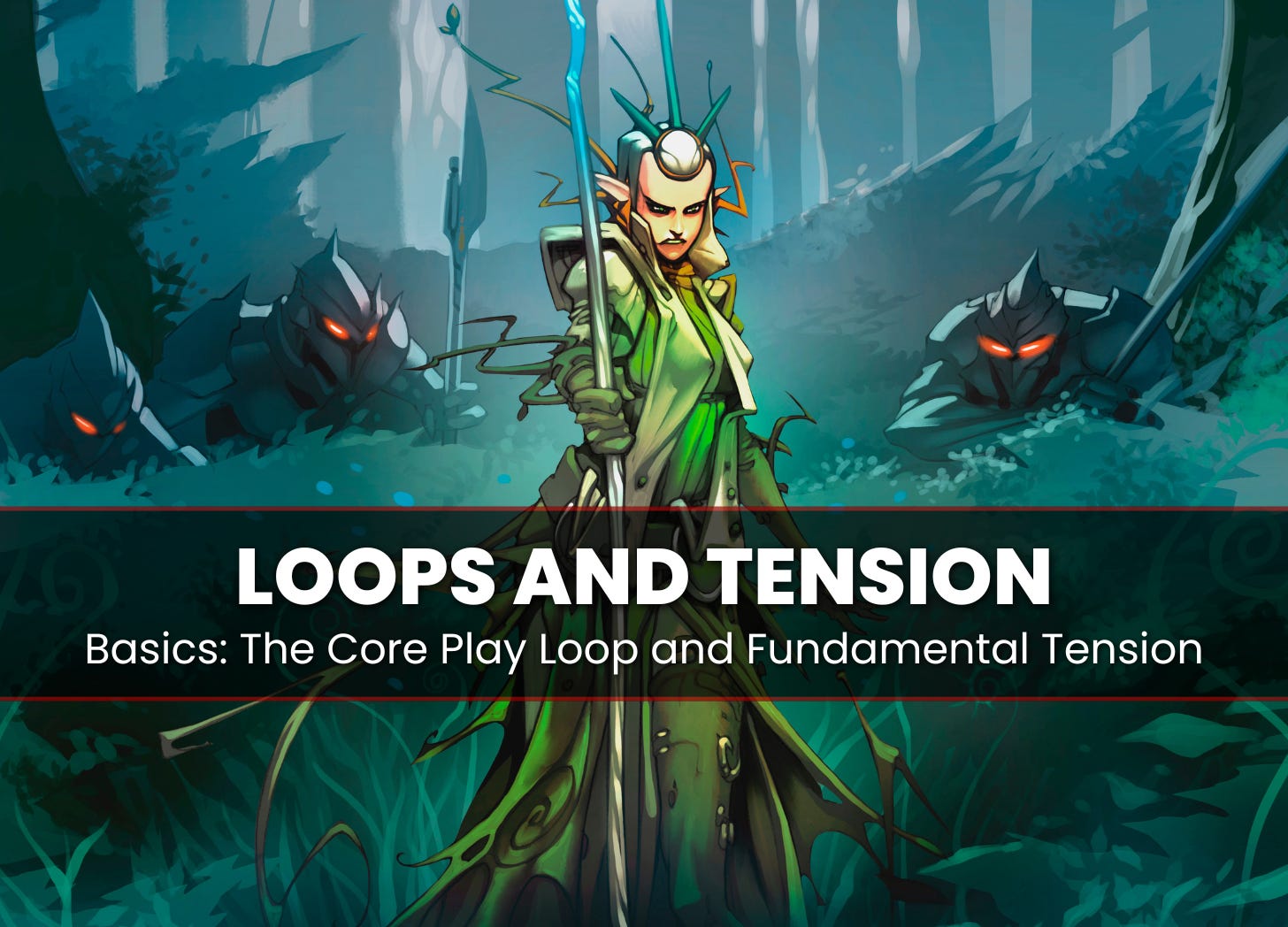Loops and Tension
The Designer #5: Core Design Loops and Fundamental Tension
This is the fifth issue of The Designer, a brand-new Newsletter for paid subscribers. In addition to more comprehensive design lessons, issues of this newsletter may feature educational videos, interactive assignments, supporting content from the podcast, and other unique posts.
If you’re a paid subscriber, enjoy this article in its entirety!
If you’re a free subscriber, this is a preview of this new and exciting newsletter, and I’ve made sure there’s plenty to learn.
Paid subscriptions allow me to invest more time into the podcasts and newsletters while keeping much of it free to the public. If you feel these newsletters and podcasts inspire, entertain, or inform you, I hope you consider a paid subscription.
What is the Core Play Loop?
A Core Play Loop is the fundamental cycle of actions that players repeat throughout a game, which forms the basis of gameplay and engages players by providing a continuously rewarding or challenging experience.
This loop is the basic play pattern at the heart of your game. To keep you focused, the Core Play Loop should be describable in a sentence or two.
In Go, the core game loop is placing stones one at a time and trying to capture territory.
In Call of Duty, the core game loop involves obtaining weapons and ammo and killing enemies before they kill you.
You must define other elements to test the core game loop properly (e.g., how a player moves, the damage ranges of various weapons, how high my character jumps, etc.). Still, these elements should be loosely defined and flexible. The goal is for all the peripheral rules and elements to be only “good enough” to test the core loop. You will have time to improve all the peripherals later.
In this phase, your game will have many broken aspects: the strategies will not be balanced, the pieces will be ugly, and many fundamental elements will still be in the works. A designer must see through all that to find a diamond of fun in the rough prototype.
Training your instincts to focus on the fun aspects and overlook the rough patches during early testing is crucial for game designers and all creative projects alike.
While developing the original version of our digital collectible game, SolForge, we had to do all of our initial prototyping on paper while still trying to design a game that worked best digitally. This required a lot of ugly “hacks” to make the game work. A single playtest game could take well over an hour. After that, we usually made changes to the game, which could take several more hours to update and set up. After going through several failed systems, including terrain, fog of war, NPC monsters, and more, we settled on the basic core loop of cards that level up as you play them.
When you have a fun basic core play loop, you are ready to move on to the next phase, ramping up the fundamental tension.
Keep reading with a 7-day free trial
Subscribe to Think Like A Game Designer to keep reading this post and get 7 days of free access to the full post archives.



